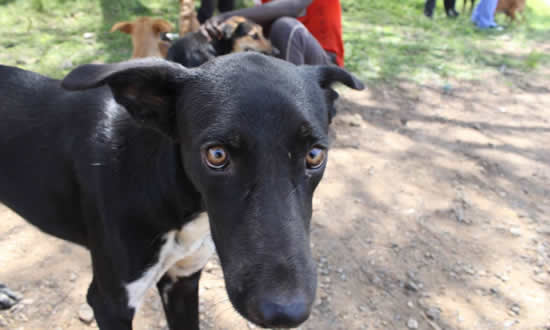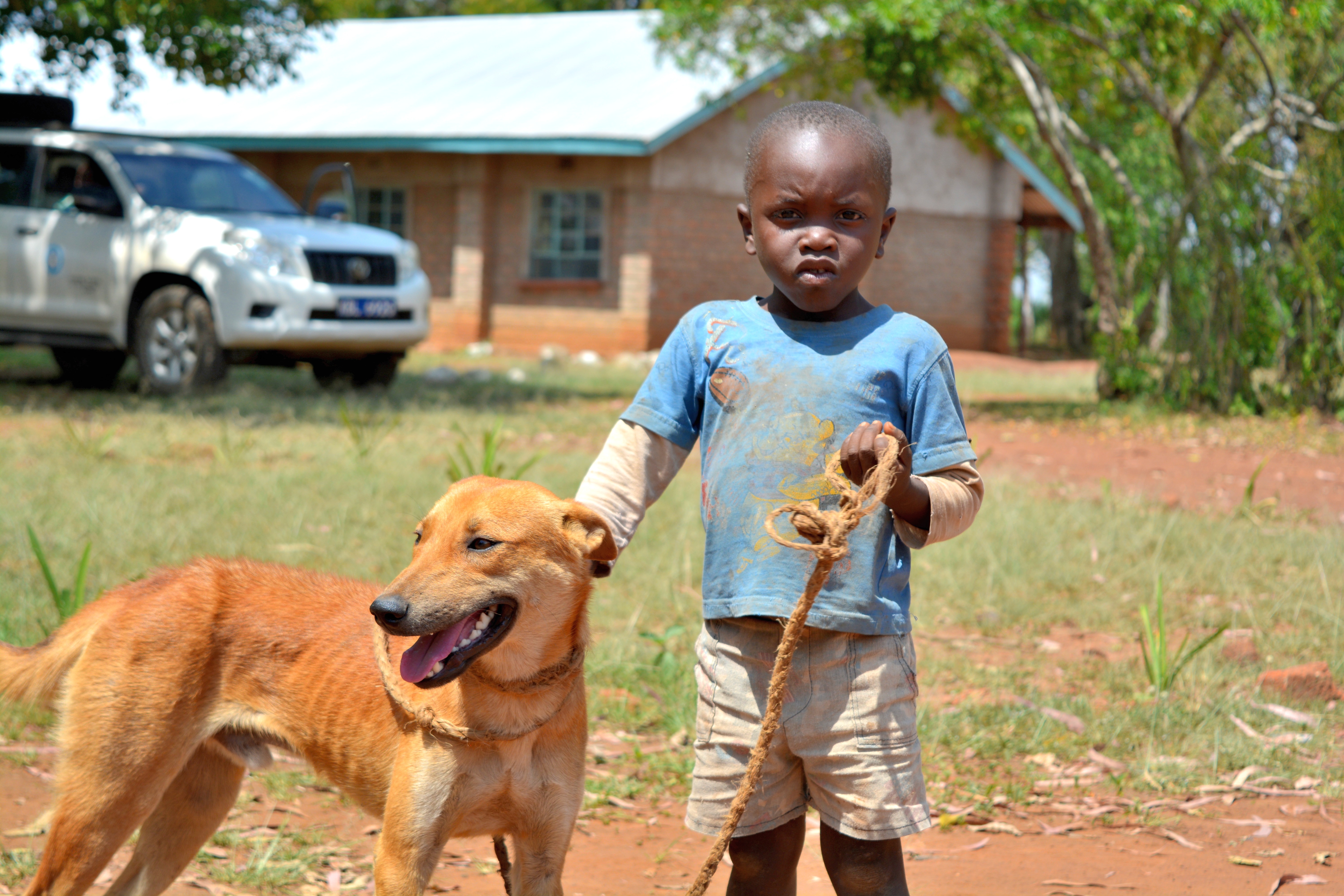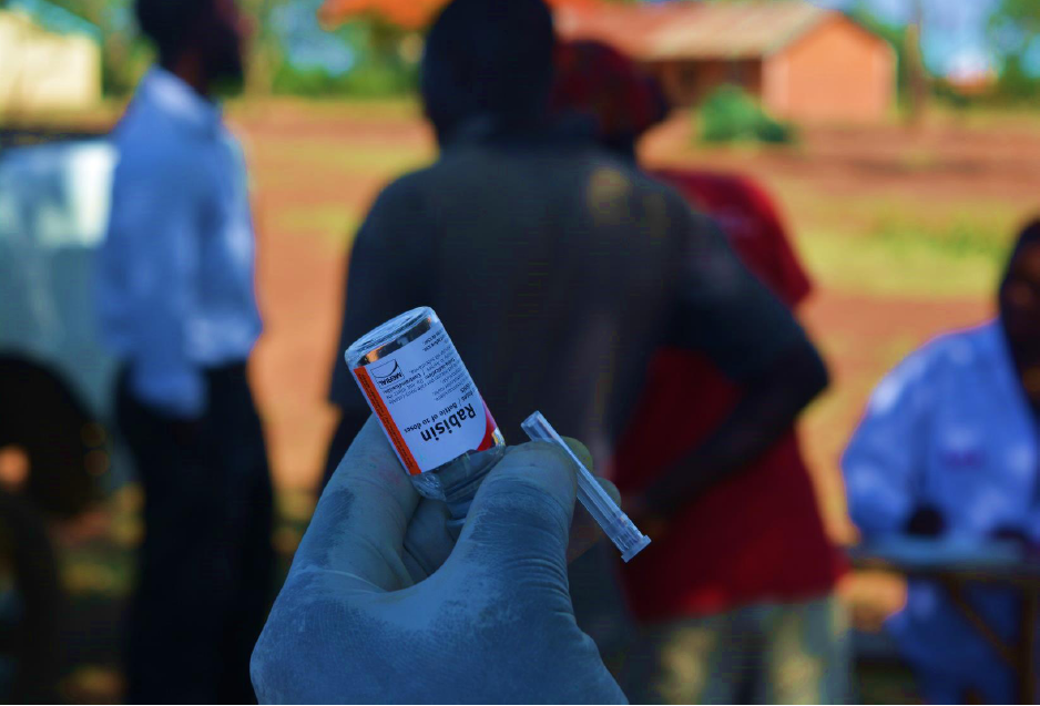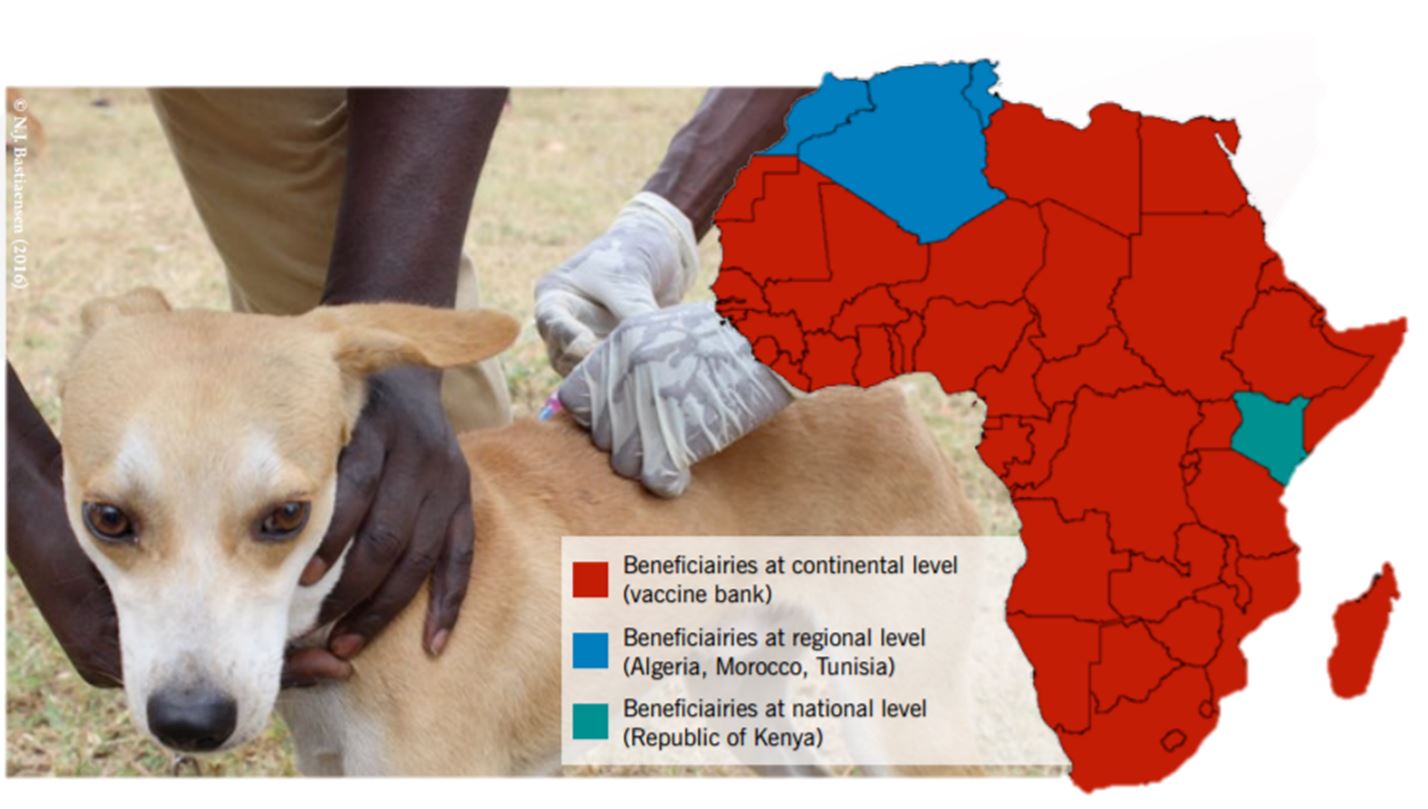
Rabies is one of the most deadly diseases that can be transmitted from an animal to a man, woman or child: a zoonosis. Each year, it kills as many as 70,000 people worldwide, mostly children in developing countries. Over 95% of human cases of rabies are due to dog bites and unlike many other diseases, all the tools needed to eliminate this disease are already available. In close cooperation with the World Health Organisation (WHO), the OIE has embarked on an ambitious programme to eliminate rabies once and for all, in order to avoid further human deaths from this disease, by supporting the widespread vaccination of dogs
More information : www.oie.int/rabies
The SVSDC Project supports these efforts in Africa at three levels: a national pilot programme to support the elimination of rabies in selected counties in Kenya, a regional programme to support the coordination and harmonisation of rabies control efforts in selected countries in northern Africa and the establishment of a continental OIE Rabies Vaccine Bank for Africa, able to supply quality vaccines for the vaccination of dogs upon receipt of a formal request from an OIE Member Country
As part of a broad consortium of donors and technical agencies and civil society organisations, the OIE, through the SVSDC+R projects, supports the implementation of the Strategic Plan for the Elimination of Human Rabies in Kenya by the year 2030.
The strategy provides a guide for systematic reduction of rabies risk through sustained mass dog vaccinations, pre and post exposure prophylaxis and public education. This strategy is based on activities planned by the national Ministries of Health and of Agriculture, Livestock and Fisheries, in accordance with the GARC Stepwise Approach to Rabies Elimination (SARE) to move from an endemic state to a disease free status. In doing so, 6 stages are expected, each stage foreseeing a set of activities which will build on the previous stage to progressively reduce the risk of the disease.
This project supports stages 1 and 2 of this strategy in a selected number of counties in Kenya, and reports to the relevant GARC coordination instrument in Africa (PARaCoN) throughout its implementation.
In August 2016, a National Rabies Elimination Coordination Committee (NRECC) was set up and is responsible for the coordination of the implementation of the rabies elimination strategy.
In addition, a toll-free line for reporting dog bites has been commissioned and a total of 800,000 doses of rabies vaccines was delivered from the OIE Rabies Vaccine Bank in October 2016, October 2018 and November 2019.
So far (December 2019) a total of 290,000 dogs have been vaccinated in Siaya County since December 2016. Active rabies surveillance and dog ecology studies are being undertaken in Siaya, Kitui, Machakos, Nandi, Kisumu and Makueni counties.
Dog
In the Mediterranean region, REMESA, the Animal Health Network for the Mediterranean, plays a pivotal role in the coordination activities with a focus on defining a regional approach for rabies control and eradication and the implementation of mass vaccination campaigns of stray dogs. The REMESA Network (for Réseau Méditerranéen de Santé Animale) is based on the Veterinary Services of each country, which have adhered to its objectives.
The SVSDC+R project supports a selected number of REMESA countries in North Africa, i.e.
Through the OIE Rabies Vaccine Bank mechanism, a total of almost 800,000 doses of vaccines has so far been delivered to Tunisia in support of its vaccination campaign.
The Tunisian Veterinary Services also benefited of two training workshops (May and September 2017) dedicated to the management of stray dog populations (mainly focused on capture techniques). As a result, the first permanent Municipal Centre for sterilisation and vaccination of stray dogs was established in in Tunis
At the beginning of 2016, the OIE launched an international call for tender, in collaboration with the World Health Organization, for the selection of dog rabies vaccine manufacturers to continue the supply of OIE Rabies Vaccine Bank mechanism, which was initially established in 2012.
This process, moreover, enabled competition between vaccine manufacturers to be reopened.
Following the meetings of the OIE Rabies Vaccine Bank Tender Opening Committee and Selection Committee two rabies vaccine manufacturers were selected were selected and are currently supplying the OIE Rabies Vaccine Bank mechanism.
SVSDC map rabies beneficiaries
Following formal request received by the OIE from
more than 2.3 million doses of rabies vaccines were delivered through the OIE Rabies Vaccine Bank with funding from the SVSDC+R Project.
Using funding from other projects managed by the OIE or donors to the OIE, the OIE has also delivered rabies vaccines to other countries. In Africa, the beneficiary countries so far include
through projects managed by the OIE;
through (direct) purchases;
through purchases of the Swiss Tropical and Public Health Institute;
through WHO support; and
through FAO support.
With SVSDC+R support, several communication tools were developed to promote the concept of the OIE Rabies Vaccine Bank in Africa and beyond.




